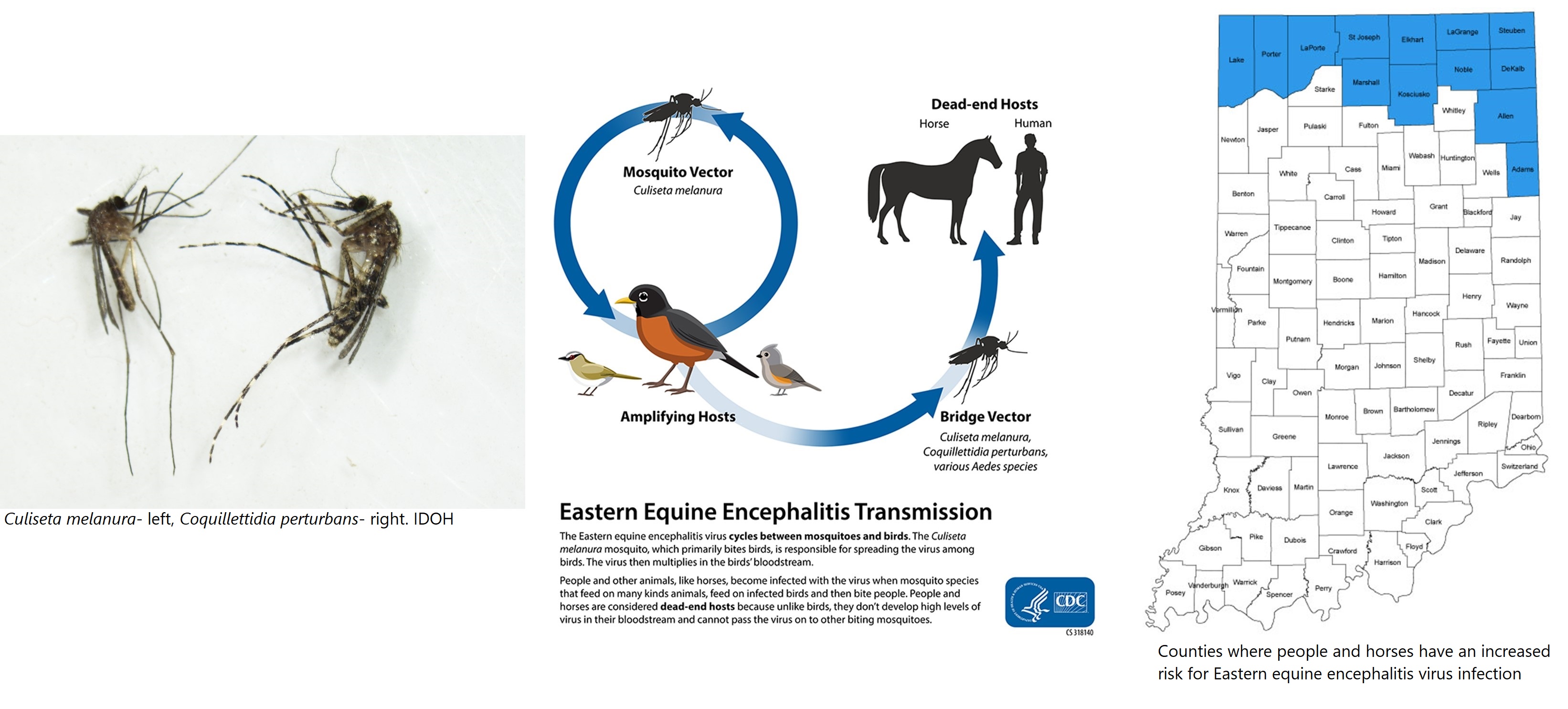Signs and symptoms of EEE virus disease usually appear within 4 to 10 days after a bite from an infected mosquito. EEE virus infection can result in a systemic (flu-like) illness, or it can attack the nervous system, causing inflammation in the brain or the membranes that surround the brain and spinal cord. Some people who become infected with EEE virus may not develop any symptoms.
Symptoms of systemic EEE virus infection appear abruptly and include fever, chills, body aches, joint pain, and fatigue. People with systemic EEE virus infection are usually sick for 1 to 2 weeks and can recover completely. In some older children and adults, systemic EEE virus infection can progress to infection of the nervous system; in infants, nervous system infection can occur without any signs of systemic illness first. Patients with nervous system infection can have fever, headache, vomiting, diarrhea, seizures, behavioral changes, drowsiness, and coma. People who are younger than 15 years and older than 50 years are at the greatest risk of severe disease if infected with EEE virus.
Approximately one in three cases of EEE virus infection of the nervous system are fatal. Death usually occurs 2 to 10 days after onset of symptoms but can occur much later. Many people who recover will experience severe, permanent complications. These can include seizures, paralysis, mild to severe brain dysfunction, severe intellectual impairment, and personality disorders. Many patients with complications require long-term care and die within a few years.


